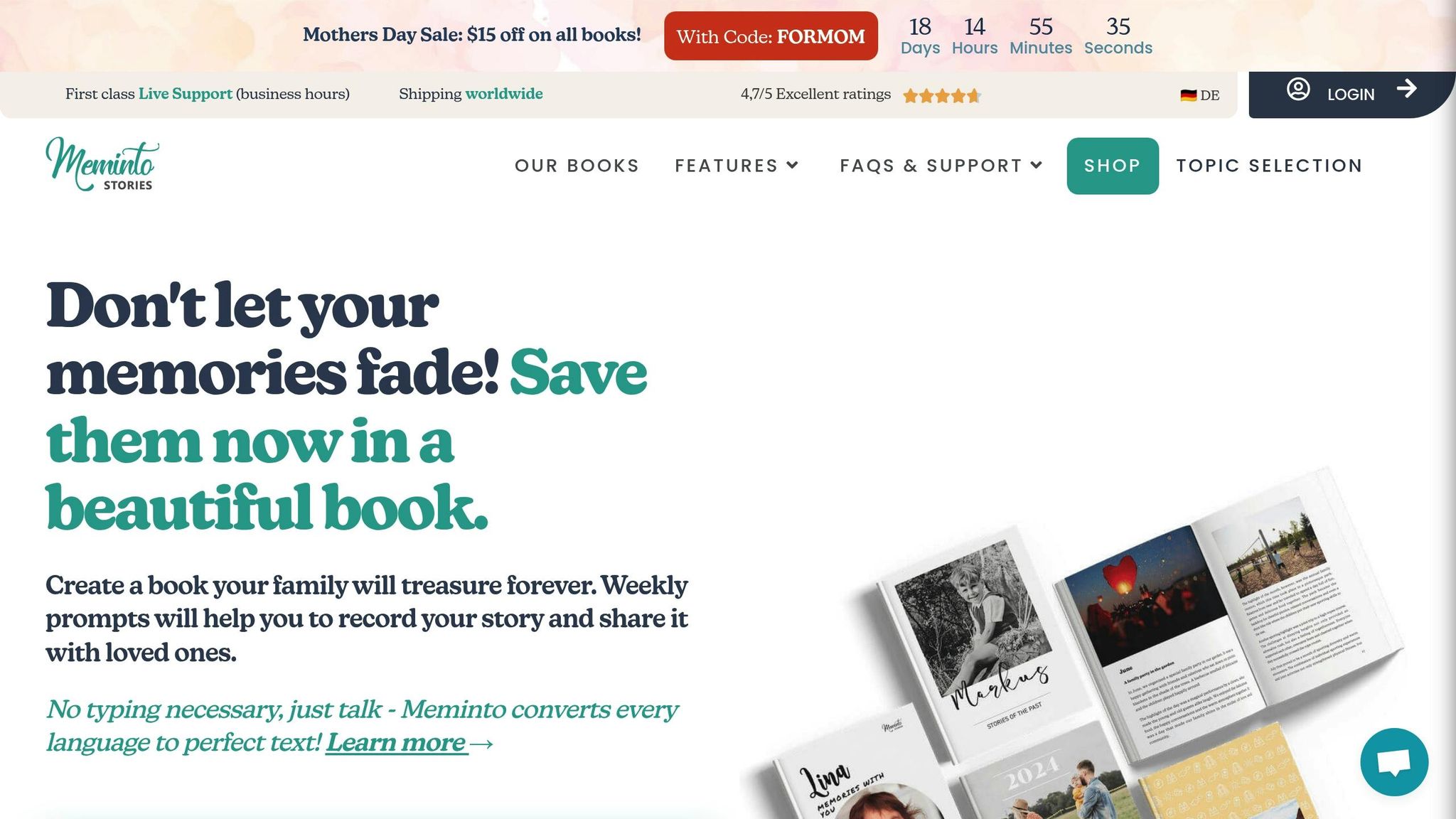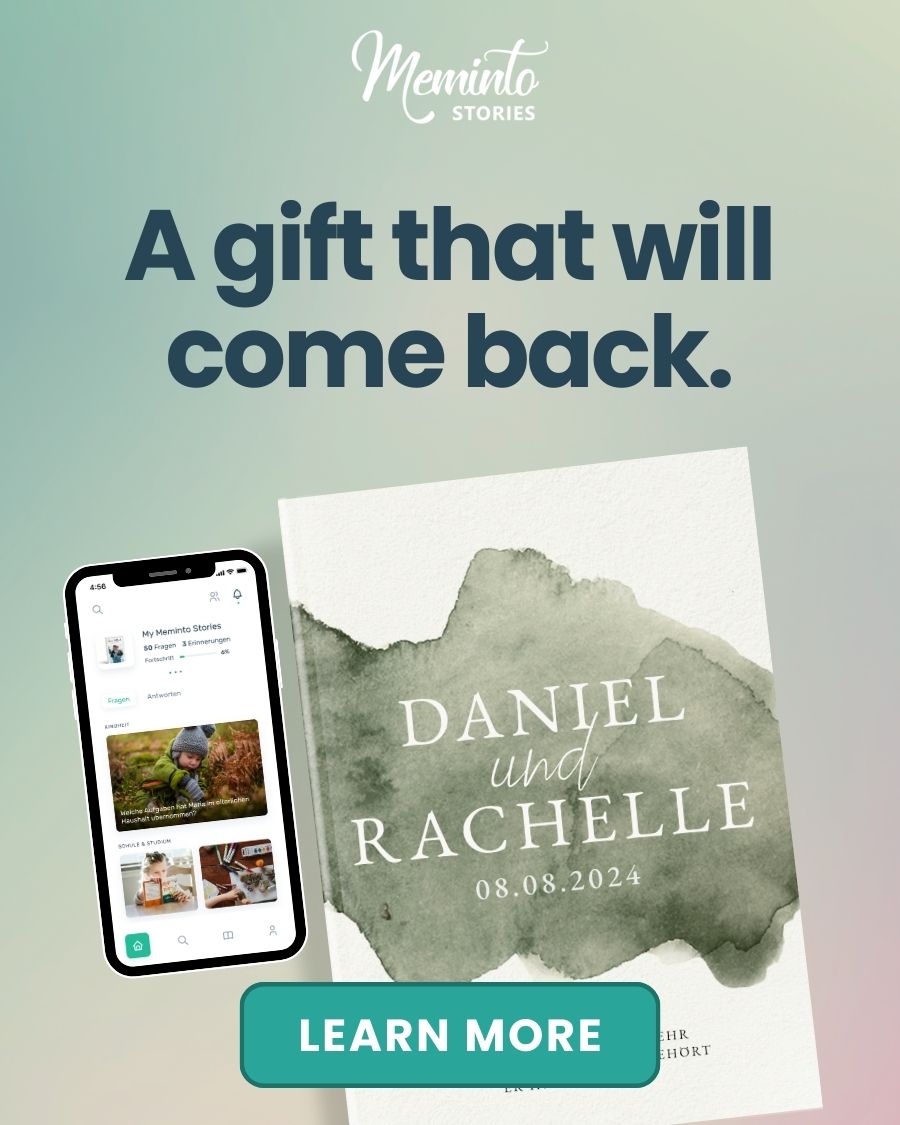Creating a memory book starts with choosing the right theme, which shapes how your stories are organized, presented, and remembered. Here’s how to get started:
- Why Themes Matter: A theme adds structure, emotional connection, and focus to your storytelling.
- Popular Themes: Family legacy, milestones, travel adventures, or meaningful relationships.
- Deciding What to Include: Focus on memories that align with your theme, such as life events, special occasions, or everyday moments.
- Design Tips: Use photos, videos, and layouts that complement your theme, like timelines for milestones or maps for travel stories.
Tools like Meminto Stories make it easy to bring your theme to life with templates, guided prompts, and collaboration features. Start with a clear theme to create a memory book that’s meaningful and organized.
10 Creative Photo Book Ideas to Make Your Memories Last …
Memory Book Theme Basics
A theme sets the tone for your memory book, but understanding its core elements helps you bring it to life.
A theme determines how you organize and present your stories, creating a clear and meaningful narrative that reflects your experiences.
What Makes a Theme
A theme influences key aspects of your memory book, including:
- Which stories to include
- How to structure your content
- The visual style and design
- The tone of your narrative
Think of your theme as the lens through which your memories are shared. For example, one Meminto Stories user created a book about their grandfather’s life, uncovering hidden stories that enriched their family’s history.
Why Themes Matter
A well-defined theme provides structure, making your storytelling more engaging. Selma, a Meminto Stories user, explains:
“With Meminto Stories I found a way to keep all my flashbacks of the first adventure with our child in a book. Now we can cherish them forever.”
Themes are important because they:
- Guide your storytelling: A clear theme helps you choose memories that best fit your narrative.
- Create emotional connections: Thoughtful themes make it easier for readers to connect with and enjoy your stories.
- Keep your book focused: A theme ensures your book doesn’t feel like a random assortment of memories.
Once you’ve chosen a theme, setting clear goals will help you decide which memories to include.
Deciding Which Memories to Include
When selecting memories, focus on those that align with your theme and help create a clear, engaging story. Once you’ve settled on a theme, narrow down your focus by defining the scope of your project.
Define Your Scope
Here are some ways to outline the focus of your story:
- A specific life event or milestone
- A period spanning several years
- A meaningful relationship
- Special events and celebrations
- Everyday moments that stand out
For example, Jessica and Marco used Meminto Stories to create a wedding book. Their guests contributed stories, photos, and videos, turning it into a keepsake they cherish and revisit often.
Popular Theme Ideas
- Family Legacy: Capture childhood memories and family traditions. Ina shared how her son treasures his keepsake book:
“I highly recommend the childhood book. I made it for my son so he knows how great our family time used to be. He already loves it and enjoys looking at it over and over again.”
- Milestones: Highlight personal achievements or life transitions.
- Travel Chronicles: Relive your adventures with snapshots and stories from your trips.
To make your storytelling richer, use prompts and speech-to-text tools to record detailed and engaging accounts. Collaborate with others to include a variety of perspectives and experiences.
Explore these themes to find the one that best fits your project’s scope.
Picking the Right Theme
Now that you’ve considered potential themes, it’s time to connect your memories with the right design elements.
Matching Themes to Content
Pair your chosen theme with the type of memories you’re capturing:
- Life Events: Use a chronological layout to highlight milestones.
- Family History: Opt for a multi-generational format to reflect traditions.
- Travel Stories: Organize by location-based sections to document adventures.
- Relationships: Try interactive storytelling to celebrate shared experiences.
Once you’ve matched your theme, focus on design details that bring it to life.
Book Style Options
Choose design elements that emphasize your theme:
- Media Integration: Add photos, audio, and video to make your theme more engaging. For example, embed video clips to enhance travel stories.
- Collaborative Features: Invite family or friends to share their stories, photos, and videos.
- Layout Choices: Use timelines for life events, interactive spreads for relationships, maps for travel memories, and generational layouts for family histories.
These elements can help you create a personal, meaningful book that truly reflects your theme.
Creating Themed Books with Meminto Stories

Once you’ve chosen your theme and style, Meminto Stories makes it simple to turn your ideas into a beautifully crafted book.
Tools to Build Your Theme
Meminto Stories offers AI-powered speech-to-text and guided prompts to help you organize your memories around your theme.
You can add a personal touch by including media like:
- Photos, voice recordings, or video clips
- Options for full-color 6×9″ hardcover editions or digital flipbooks
- Collaborator access to let others contribute their memories
These features help ensure your theme is reflected on every page.
Pre-Designed Theme Templates
Meminto Stories also provides templates designed for various life experiences. Some available options include:
- Life Book: Perfect for personal biographies
- Wedding Book: Focused on marriage memories
- Childhood Book: Captures growing-up stories
- Travel Book: Organizes adventures by destination
Books start at $99 for a full-color, 6×9″ hardcover edition with up to 100 pages.
You can personalize these templates by adjusting layouts and prompts to fit your story. Use professional layouts to polish your text and images. Combine these templates with your content mapping from ‘Matching Themes to Content’ for a cohesive narrative.
Conclusion
Picking the right theme for your memory book sets the tone for your storytelling, helping you decide which memories to highlight and how to showcase them. Align your theme with your purpose – whether you’re celebrating milestones, documenting family history, or cherishing special occasions – and choose design elements that bring your story to life. Tools like Meminto Stories offer AI transcription, guided prompts, and customizable templates to make the process smooth and create a keepsake that’s both meaningful and well-organized.

















